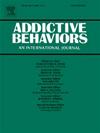从吸烟到完全或部分使用电子烟的转变:一项针对法国大学生的多阶段混合方法研究。
IF 3.7
2区 医学
Q1 PSYCHOLOGY, CLINICAL
引用次数: 0
摘要
背景:很少有研究按吸烟状况估算法国年轻人使用电子烟的频率,以及吸烟者如何开始和继续使用电子烟。我们的目的是描述吸烟学生使用电子烟的情况:2018年9月至2020年3月期间,我们在波尔多大学开展了一项多阶段混合方法研究。研究包括三项不同的子研究:1)横跨五个校区的横断面研究(n = 211);2)定性研究(n = 30);3)在线横断面研究(n = 415)。这些研究结合在一起,形成了一个解释性顺序设计(第一阶段)和一个收敛性平行设计(第二阶段):尽管41%的学生在一生中至少尝试过一次电子烟,但只有7%的学生是当前的使用者。电子烟的尝试和当前使用(即偶尔或每天使用)主要发生在当前和以前的吸烟者中。学生吸烟者开始使用电子烟是出于好奇,与其他吸烟者一起使用。在从吸烟到持续吸食电子烟的转变过程中,有两个主要干预因素:认为吸烟有问题和个人对电子烟使用的承诺(即购买自己的设备、掌握技术技能和增加使用频率)。在目前的吸食者中,专门吸食者和双重吸食者在吸烟目标、他们对电子烟的作用、他们的身份发展以及他们认为的社会或个人利益方面存在差异:这项研究强调了大学生从吸烟过渡到持续吸食电子烟的决策过程的复杂性。这需要一个社会支持环境和一些内在因素,其中吸烟问题化和个人对电子烟的承诺是关键因素。本文章由计算机程序翻译,如有差异,请以英文原文为准。
The transition from cigarette smoking to the exclusive or partial use of e-cigarettes: A multi-stage mixed methods study among French university students
Background
Few studies have estimated the frequency of e-cigarette use by smoking status among French young adults, and how those who smoke tobacco start and continue to use e-cigarettes. Our aim was to describe e-cigarette use among students who smoked tobacco.
Methods
A multi-stage, mixed methods study was conducted at the University of Bordeaux between September 2018 and March 2020. The study consisted of three different sub-studies: 1) a cross-sectional study across five campuses (n = 211), 2) a qualitative study (n = 30), and 3) an online cross-sectional study (n = 415). These were combined to form an explanatory sequential design (stage 1) and then a convergent parallel design (stage 2).
Results
Although 41 % of students had tried e-cigarettes at least once in their lifetime, only 7 % were current users. Both e-cigarette experimentation and current use (i.e. occasional or daily use) were mainly found among current and former smokers. Student smokers started using e-cigarettes out of curiosity, with other vapers. Two main factors were identified as intervening in the transition from smoking to sustained vaping: the perception of smoking as problematic and personal commitment to e-cigarette use (i.e. by buying their own device, acquiring technical skills, and increasing the frequency of use). Among current vapers, exclusive vapers and dual users differed in terms of their smoking goals, the role they attributed to e-cigarettes, their identity development and their perceived social or personal benefits.
Conclusion
This study highlighted the complexity of the decision-making process for transitioning from smoking to sustained vaping among university students. This required a socially supportive environment and some intrinsic factors, of which the problematization of smoking and personal commitment to vaping were key factors.
求助全文
通过发布文献求助,成功后即可免费获取论文全文。
去求助
来源期刊

Addictive behaviors
医学-药物滥用
CiteScore
8.40
自引率
4.50%
发文量
283
审稿时长
46 days
期刊介绍:
Addictive Behaviors is an international peer-reviewed journal publishing high quality human research on addictive behaviors and disorders since 1975. The journal accepts submissions of full-length papers and short communications on substance-related addictions such as the abuse of alcohol, drugs and nicotine, and behavioral addictions involving gambling and technology. We primarily publish behavioral and psychosocial research but our articles span the fields of psychology, sociology, psychiatry, epidemiology, social policy, medicine, pharmacology and neuroscience. While theoretical orientations are diverse, the emphasis of the journal is primarily empirical. That is, sound experimental design combined with valid, reliable assessment and evaluation procedures are a requisite for acceptance. However, innovative and empirically oriented case studies that might encourage new lines of inquiry are accepted as well. Studies that clearly contribute to current knowledge of etiology, prevention, social policy or treatment are given priority. Scholarly commentaries on topical issues, systematic reviews, and mini reviews are encouraged. We especially welcome multimedia papers that incorporate video or audio components to better display methodology or findings.
Studies can also be submitted to Addictive Behaviors? companion title, the open access journal Addictive Behaviors Reports, which has a particular interest in ''non-traditional'', innovative and empirically-oriented research such as negative/null data papers, replication studies, case reports on novel treatments, and cross-cultural research.
 求助内容:
求助内容: 应助结果提醒方式:
应助结果提醒方式:


